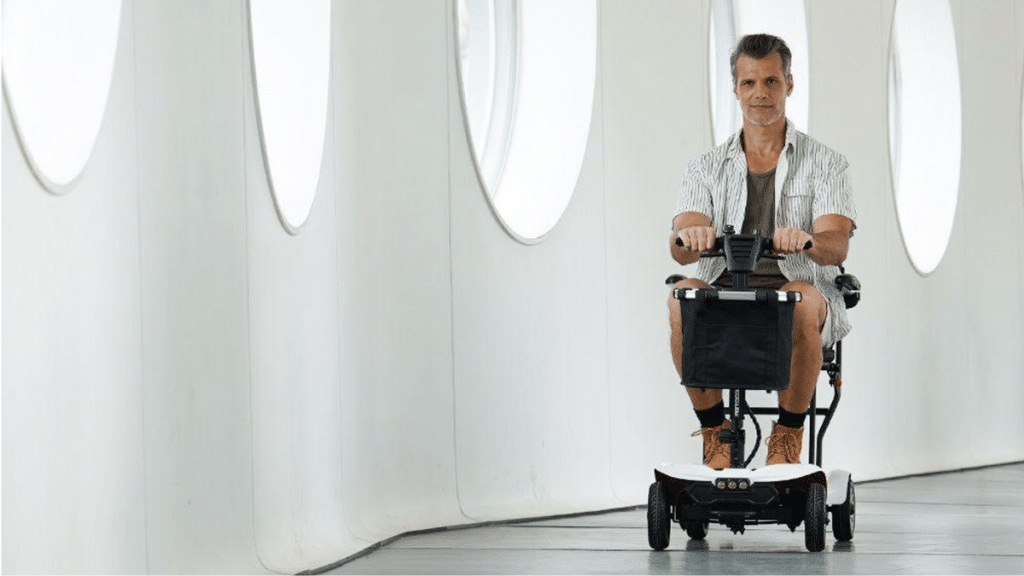In today’s world, accessibility is an essential component of building an inclusive society. For individuals with mobility impairments, the ability to navigate public spaces, transportation systems, and even their homes independently is crucial. Mobility scooters have become a vital tool in ensuring that people with disabilities can maintain their independence, enjoy social participation, and access the services they need.
These scooters, whether scooters for disabled people, mobility scooters, or senior scooters, are more than just transportation devices. They are empowering individuals by providing them with the freedom to move around safely and comfortably. This article explores the role of mobility scooters in promoting accessibility and improving the lives of people with disabilities.
What Is Accessibility and Why Does It Matter?
Accessibility refers to the ability for all individuals, regardless of their physical capabilities, to navigate public spaces and participate in daily activities with ease. For people with disabilities, ensuring access to these spaces is crucial for independent living and equal participation in society.
Unfortunately, many urban areas are still not fully accessible. Stairs, narrow doorways, and poor sidewalk conditions are just a few of the obstacles faced by individuals with mobility impairments. Mobility scooters play a crucial role in overcoming these barriers, offering individuals the freedom to move about more easily and independently.
How Do Mobility Scooters Empower People with Disabilities?
Mobility scooters provide a lifeline to individuals who face mobility challenges. They are particularly valuable for people who find walking long distances difficult but are not fully dependent on a wheelchair. These scooters allow users to maintain independence and continue their daily activities without relying on others for transportation.
The empowerment that comes with using a mobility scooter is significant. Users gain the ability to travel to appointments, run errands, and participate in social gatherings, all of which contribute to their sense of autonomy and well-being.
How Do Mobility Scooters Improve Access to Public Spaces?
- Wider Pathways and Ramps: Many public spaces are now designed with mobility scooters in mind. Cities are adding wider sidewalks and ramps to make it easier for users to move around.
- Designated Parking Areas: Scooter parking spaces are becoming more common in public areas, allowing senior scooter users to park their vehicles safely.
- Transport Accessibility: Many public transport systems now allow mobility scooters on buses and trains, increasing the accessibility of far-reaching locations.
These changes are helping to break down barriers that once limited access for those using handicap scooters or other mobility aids, allowing individuals to participate more fully in community life.
How Are Urban Environments Adapting to Scooter Users?
Urban environments are beginning to adapt more effectively to the needs of mobility scooter users. Here are some key changes happening in cities:
- Curb Cuts and Accessible Entrances: Many urban areas are now installing curb cuts to replace stairs, making it easier for scooters to access buildings and sidewalks.
- Public Transport Improvements: Cities are implementing better access to public transit for mobility scooters, including designated spaces for scooters on buses and trains.
- Smooth Surfaces and Safe Parking: More cities are focusing on creating smoother road surfaces and providing safer scooter parking spaces in public areas.
These changes not only benefit those using mobility scooters but also create a more inclusive environment for everyone.
What Challenges Do Mobility Scooter Users Still Face?
Despite significant progress, several challenges remain for mobility scooter users:
- Uneven Sidewalks: Many urban areas still have poorly maintained sidewalks with cracks and uneven surfaces, making it difficult for scooter users to travel safely.
- Lack of Charging Stations: Although some cities are improving infrastructure, the availability of charging stations for handicap scooters is still limited in many locations.
- Cost Barriers: The high cost of quality mobility scooters remains a challenge for many potential users, especially for those without insurance coverage.
While many cities are making strides toward improved accessibility, these ongoing issues highlight the need for continued investment in infrastructure and affordability for all users.
Summary: Why Mobility Scooters Are Essential for an Inclusive Society
Mobility scooters are not just transportation devices; they are key tools in promoting accessibility and inclusion. These scooters help individuals with disabilities regain independence, allowing them to access public spaces, participate in social activities, and move freely within their communities.
As cities continue to improve their infrastructure and make adjustments to better support mobility scooter users, we are taking important steps toward creating a more inclusive world. Mobility scooters are not just about transportation—they are about ensuring that everyone, regardless of ability, has the opportunity to lead a full and active life.
